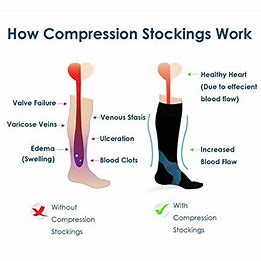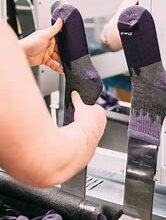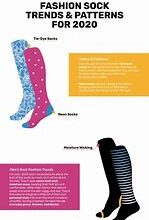Compression Socks: What They Are and Who Needs Them

Specifications
| Feature | Details |
|---|---|
| Camera | 108 MP |
| Battery | 5000 mAh |
| Display | 6.7 inches |
Compression socks, often misunderstood yet increasingly popular, are a type of hosiery that help increase blood circulation in the legs. But what exactly are they, and who stands to benefit from their use?
What are Compression Socks?
Compression socks or compression stockings are specially designed to apply pressure to your lower legs, helping to maintain blood flow and reduce discomfort and swelling. They may be prescribed by your doctor for medical reasons, or you may choose to wear them for comfort or to prevent serious health problems.
How do Compression Socks Work?
Compression socks provide graduated compression, meaning they are tighter at the ankle and lessen in compression as they move up the leg. This encourages blood flow upwards towards the heart, instead of pooling in the lower legs. They also support veins and can prevent venous ulcers, deep vein thrombosis (DVT), and other vascular disorders.
Types of Compression Socks
- Medical Compression Socks: These are typically prescribed by a doctor for those with certain medical conditions.
- Compression Socks for Running: Used by athletes to improve performance and recovery.
- Compression Socks for Nurses: Beneficial for those on their feet all day to prevent swelling and aching.
- Compression Socks for Travel: Can help prevent DVT on long-haul flights.
Benefits of Compression Socks
From alleviating swelling to enhancing sports performance, compression socks health benefits are extensive. They are particularly beneficial for individuals at risk for circulation problems, such as DVT, varicose veins, and diabetes.
Who Needs Compression Socks?
Various individuals can benefit from wearing compression socks, including but not limited to:
- Compression socks for pregnancy: Can help reduce swelling and varicose veins in pregnant women.
- Compression socks for elderly: Helps improve circulation, reduce swelling, and prevent varicose veins and DVT.
- Compression socks for diabetics: Can help prevent diabetic neuropathy and swelling.
- Compression socks for athletes: Enhances recovery and performance.
Are Compression Socks Safe?
While compression socks are generally safe, it’s always a good idea to consult with a healthcare provider, especially if you have any specific health concerns. Some people may experience minor discomfort or difficulty putting them on, but this can be mitigated with practice and the use of a compression socks fitting guide.
Compression Socks vs Regular Socks
The main difference between compression socks and regular socks lies in their design and purpose. While regular socks are designed primarily for comfort and style, compression socks are engineered to improve blood flow and reduce swelling.
Compression Socks Buyer’s Guide
When choosing compression socks, consider factors like the level of compression, size, material, and brand reputation. Reading compression socks reviews can also help you make an informed decision.
Whether you’re an athlete, healthcare professional, pregnant woman, or frequent flyer, compression socks can be game-changing. From alleviating discomfort to preventing serious health issues, they are a worthwhile investment for many. But remember, the best compression socks are the ones that fit you well and meet your specific needs.


